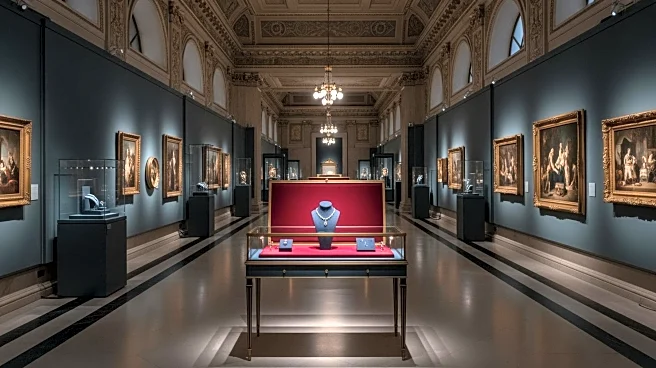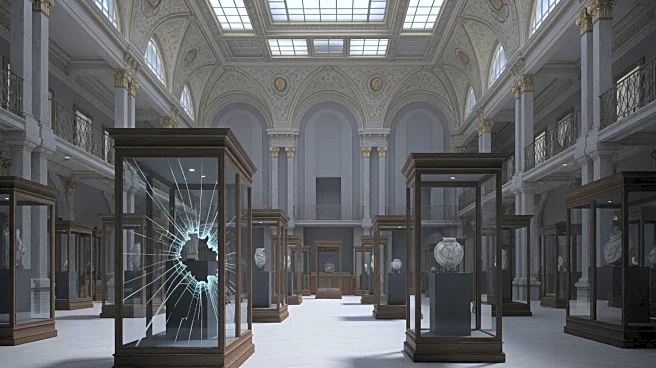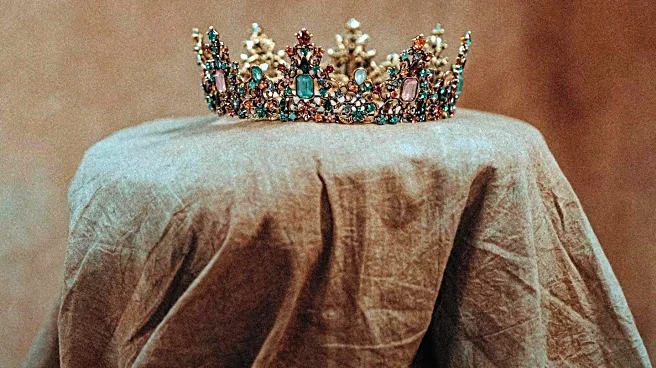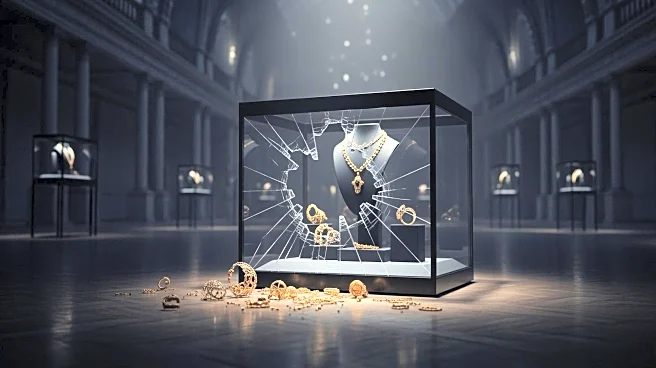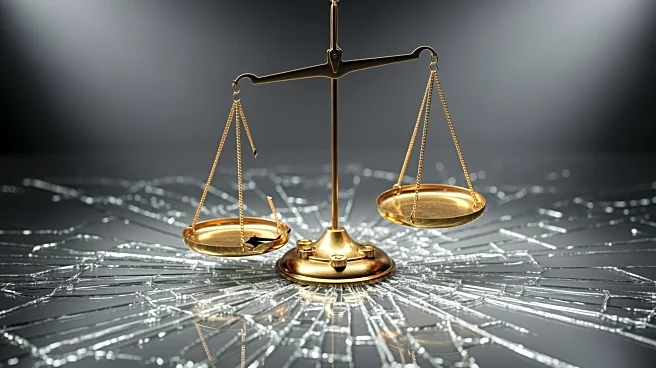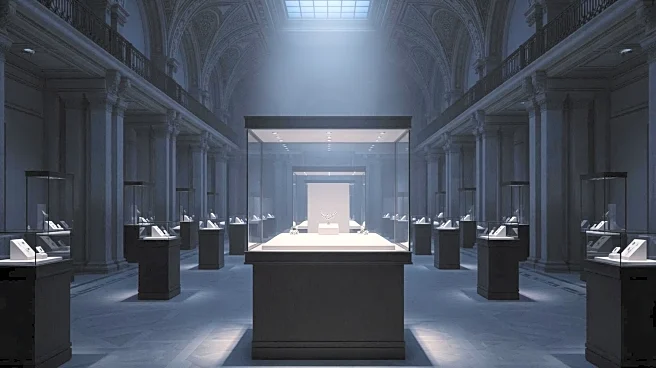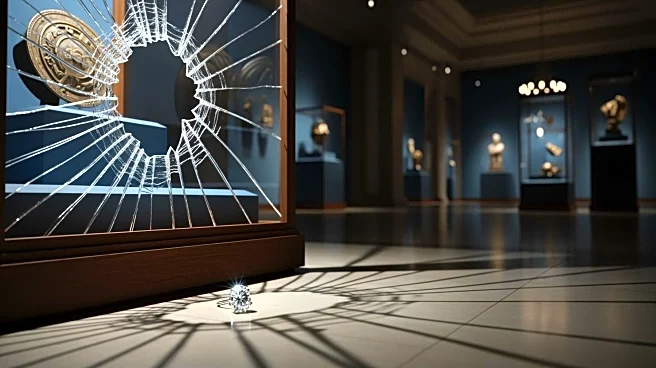What's Happening?
French authorities have acknowledged security lapses following a daring heist at the Louvre Museum, where thieves stole millions of dollars worth of jewelry in a swift operation. The robbery, which took
place in broad daylight, involved four criminals posing as construction workers. They used a furniture hoist to access a second-floor window, cut through the glass, and entered the gallery, triggering a security alarm that was not effectively communicated to guards. The thieves smashed display cases containing the 'Napoleon jewels' and 'French crown jewels,' making off with high-value items including a diadem and emerald necklace. Despite efforts to improve security at the museum, no arrests have been made, and the stolen jewels may have already been dismantled or melted down.
Why It's Important?
The theft represents a significant cultural loss for France, as the stolen items are of immense historical value, linked to figures such as Napoleon's wives. The incident has sparked national outrage and embarrassment, highlighting vulnerabilities in the security of cultural institutions. The heist has also raised concerns about the adequacy of security measures at the Louvre, which is the world's most visited museum. The theft could impact France's reputation for safeguarding its cultural heritage and may lead to increased scrutiny and pressure on museum officials to enhance security protocols.
What's Next?
French authorities are under pressure to recover the stolen jewels and apprehend the perpetrators. The investigation involves a team of 60 investigators, and there is speculation about foreign organized crime involvement. The government is likely to face calls for immediate security upgrades at cultural sites across the country. The incident may also prompt discussions on the allocation of resources for museum security and the need for technological advancements to prevent similar occurrences in the future.
Beyond the Headlines
The heist has broader implications for the security of cultural heritage worldwide, emphasizing the need for international cooperation in protecting valuable artifacts. It also raises ethical questions about the commercialization of stolen cultural property and the role of private collectors in facilitating such crimes. The incident may lead to a reevaluation of security strategies in museums globally, considering the evolving tactics of criminal organizations.


